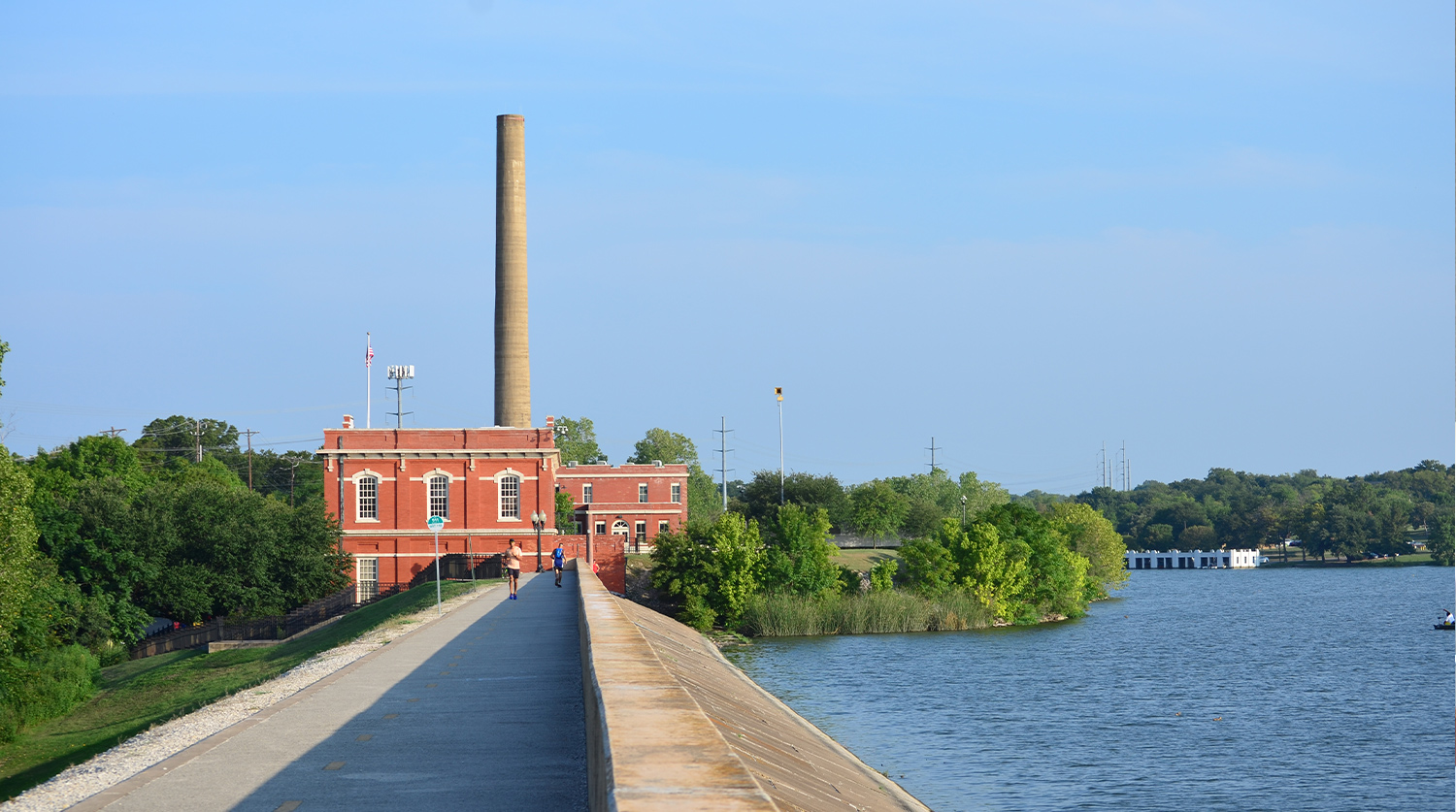The History of Dallas-Fort Worth’s Underground Plumbing System
Dallas-Fort Worth, also known as DFW, is a bustling metropolitan area in Texas that is home to over 7 million people. With its vibrant culture, booming economy, and diverse population, it is no wonder that DFW is one of the fastest-growing regions in the United States. However, beneath the surface of this thriving metropolis lies a complex and intricate network of plumbing systems that have played a crucial role in the development and growth of the city.
The history of DFW’s underground plumbing system dates back to the late 1800s when the cities of Dallas and Fort Worth were still in their early stages of development. At that time, the main source of water for the cities was the Trinity River, which was not only unreliable but also prone to contamination. As the population grew, so did the demand for a more efficient and reliable water supply.
In 1882, the Dallas Waterworks Company was established, and it became the first private water company in the city. The company built a water treatment plant and laid down a network of pipes to supply water to the growing population. However, this system was not without its flaws. The pipes were made of wood, which was prone to rotting and leaking, and the water treatment plant was not equipped to handle the increasing demand for clean water.
In 1903, the city of Dallas took over the water supply system and began to make significant improvements. The wooden pipes were replaced with cast iron pipes, and a new water treatment plant was built. This marked the beginning of a more organized and efficient water supply system for the city.
Meanwhile, in Fort Worth, a similar situation was unfolding. The city’s water supply was also unreliable, and the population was growing rapidly. In 1902, the city established its own water department and began to lay down a network of pipes to supply water to its residents. However, unlike Dallas, Fort Worth’s water pipes were made of terra cotta, which was more durable than wood but still prone to cracking and leaking.
As the two cities continued to grow, so did the demand for a more reliable and efficient water supply system. In the 1920s, both Dallas and Fort Worth began to invest in a more modern and advanced plumbing system. This included the use of reinforced concrete pipes, which were stronger and more durable than their predecessors.
The 1930s saw the construction of the Dallas-Fort Worth Regional Water District, which was a joint effort between the two cities to provide a more reliable water supply for the entire region. This marked a significant milestone in the history of DFW’s underground plumbing system as it brought together the resources and expertise of both cities to create a more efficient and sustainable water supply system.
In the following decades, the plumbing system continued to evolve and expand as the population of DFW continued to grow. Today, the underground plumbing network in DFW is a marvel of engineering, with over 9,000 miles of pipes that supply clean water to millions of residents and businesses.
In conclusion, the history of DFW’s underground plumbing system is a testament to the ingenuity and determination of its residents. From the humble beginnings of wooden pipes to the modern and advanced system that exists today, the plumbing network has played a crucial role in the development and growth of the city. As DFW continues to thrive and expand, the underground plumbing system will undoubtedly continue to play a vital role in its success.
The Engineering Marvels of the Dallas-Fort Worth Sewer System
The bustling cities of Dallas and Fort Worth are known for their vibrant culture, thriving economy, and impressive skyline. However, beneath the surface lies a complex and intricate network of pipes and tunnels that keep the cities running smoothly. The sewer system of Dallas-Fort Worth is a marvel of engineering, with a history dating back to the early 1900s.
The need for a proper sewer system in Dallas-Fort Worth became apparent as the cities grew rapidly in the early 20th century. The existing system, which consisted of open ditches and cesspools, was inadequate and posed a threat to public health. In 1911, the cities formed a joint sewer commission to address the issue, and thus began the construction of the underground marvel that we know today.
The first major project of the sewer commission was the construction of the Trinity River Sewer, which was completed in 1913. This 12-mile long sewer was a significant engineering feat, as it had to be built through the challenging terrain of the Trinity River floodplain. The sewer was constructed using a combination of open-cut and tunneling methods, and it still serves as a vital part of the sewer system today.
As the cities continued to grow, so did the need for a more extensive and efficient sewer system. In the 1930s, the cities embarked on a massive expansion project, which included the construction of a new wastewater treatment plant and the installation of miles of new sewer lines. This project was completed in 1940 and marked a significant milestone in the development of the Dallas-Fort Worth sewer system.
One of the most impressive engineering marvels of the Dallas-Fort Worth sewer system is the Trinity River Main Sewer. This massive underground tunnel stretches for 25 miles and has a diameter of 30 feet. It was constructed in the 1950s using the cut-and-cover method, where a trench is excavated, and the tunnel is built inside before being covered back up. This method allowed for the construction of the tunnel without disrupting the city above.
The Trinity River Main Sewer is not only an engineering marvel but also a crucial part of the sewer system. It collects wastewater from various smaller sewers and carries it to the treatment plant, where it is treated before being released back into the Trinity River. This process ensures that the water in the river remains clean and safe for the environment.
In addition to the Trinity River Main Sewer, the Dallas-Fort Worth sewer system also includes several other impressive structures. The Deep Tunnel System, built in the 1970s, is a network of tunnels that stretches for over 100 miles and can hold up to 200 million gallons of wastewater. This system helps prevent flooding during heavy rainstorms and also allows for the storage of excess wastewater during peak usage times.
The Dallas-Fort Worth sewer system continues to evolve and expand to meet the growing needs of the cities. In recent years, the cities have invested in new technologies, such as remote-controlled robots, to inspect and maintain the underground pipes and tunnels. These advancements have made it easier to detect and fix any issues before they become major problems.
In conclusion, the Dallas-Fort Worth sewer system is a remarkable engineering achievement that has played a crucial role in the development and growth of the cities. From the early days of open ditches to the modern, high-tech system of today, the sewer system has come a long way. It is a testament to the ingenuity and dedication of the engineers and workers who have built and maintained it over the years. As the cities continue to grow, the sewer system will undoubtedly continue to adapt and evolve, ensuring that the underground marvels of Dallas-Fort Worth remain a vital part of the cities’ infrastructure.
The Environmental Impact of the Underground Plumbing Network in Dallas-Fort Worth
The bustling cities of Dallas and Fort Worth are known for their vibrant culture, thriving economy, and impressive skyline. However, beneath the surface lies a complex and intricate network of plumbing that is essential to the daily functioning of these cities. This underground marvel is often overlooked, but its impact on the environment cannot be ignored.
The plumbing network in Dallas-Fort Worth is a vast system of pipes, tunnels, and treatment plants that work together to provide clean water and remove wastewater from homes, businesses, and industries. This network is constantly expanding and evolving to meet the growing demands of the cities’ population. With over 7 million people living in the Dallas-Fort Worth metroplex, the environmental impact of this underground plumbing network is significant.
One of the most significant environmental impacts of the plumbing network is the use of resources. The treatment plants that process the wastewater require a significant amount of energy to operate. This energy comes from fossil fuels, which contribute to air pollution and greenhouse gas emissions. In addition, the construction and maintenance of the network also require resources such as steel, concrete, and fuel for heavy machinery. As the population continues to grow, so does the demand for these resources, putting a strain on the environment.
Another environmental concern is the potential for water pollution. The plumbing network is responsible for collecting and treating wastewater before it is released back into the environment. However, if the network is not properly maintained or if there is a malfunction, untreated wastewater can leak into rivers, lakes, and groundwater. This can have devastating effects on aquatic life and can also contaminate drinking water sources. To prevent this, the cities have strict regulations and monitoring systems in place to ensure the proper functioning of the plumbing network.
The underground plumbing network also has an impact on the natural landscape. The construction of pipes and tunnels often requires digging and excavation, which can disrupt the natural habitat of plants and animals. In addition, the network can also affect the flow of groundwater, which can have consequences for the surrounding ecosystems. To mitigate these impacts, the cities have implemented measures such as using eco-friendly materials and techniques during construction and implementing green infrastructure to manage stormwater runoff.
Despite these environmental concerns, the underground plumbing network also has positive impacts on the environment. The treatment plants play a crucial role in removing pollutants from wastewater before it is released back into the environment. This helps to maintain the quality of water in rivers and lakes, which is essential for the health of aquatic life and the overall ecosystem. In addition, the network also helps to prevent flooding by managing stormwater runoff and directing it to treatment plants instead of allowing it to overflow into streets and homes.
The cities of Dallas and Fort Worth are also taking steps to make the plumbing network more sustainable. This includes implementing water conservation measures, such as promoting the use of low-flow toilets and showerheads, and investing in renewable energy sources to power the treatment plants. These efforts not only reduce the environmental impact of the network but also help to save resources and reduce costs in the long run.
In conclusion, the underground plumbing network in Dallas-Fort Worth has a significant impact on the environment. While it does have some negative effects, such as the use of resources and potential for water pollution, it also plays a crucial role in maintaining the health of the environment. As the cities continue to grow, it is essential to prioritize sustainable practices and invest in innovative solutions to minimize the environmental impact of this underground marvel.

